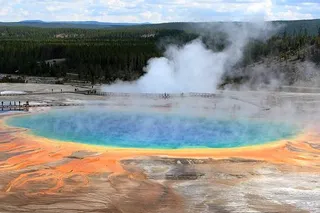Part of the Laki fissure system in Iceland that erupted from June 1783 until February 1784 in one of the largest eruptions in recorded history. Image: Ulrich Latzenhofer / Fotopedia. Saturday marks the 230th anniversary of the famed Laki (or Skaftár Fires) eruption in Iceland -- one of the largest volcanic eruptions in recorded history. It wasn't a enormous explosion like many people associate with giant eruptions, nothing like Tambora or Krakatau. However, it did have a profound impact on people living around the entire Northern Hemisphere for years afterwards, although the direct impact the eruption had on the Earth's climate is still a widely debated and researched topic. In honor of this anniversary, I thought I'd try to give a brief primer on the eruption and why it is such an important eruption, both in terms of Icelandic volcanism and its global impact.
Map of the 1783-4 Laki eruption ...














